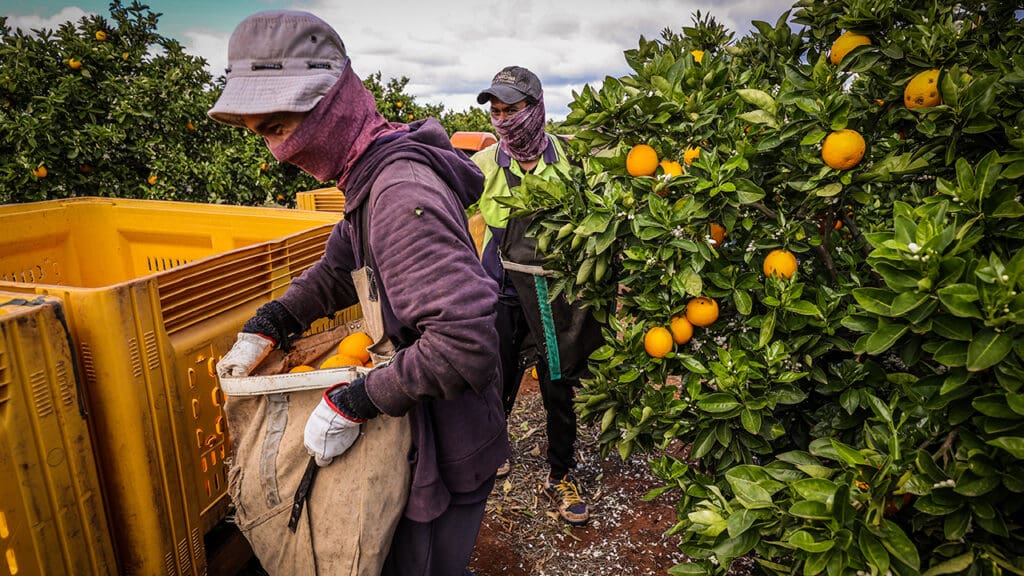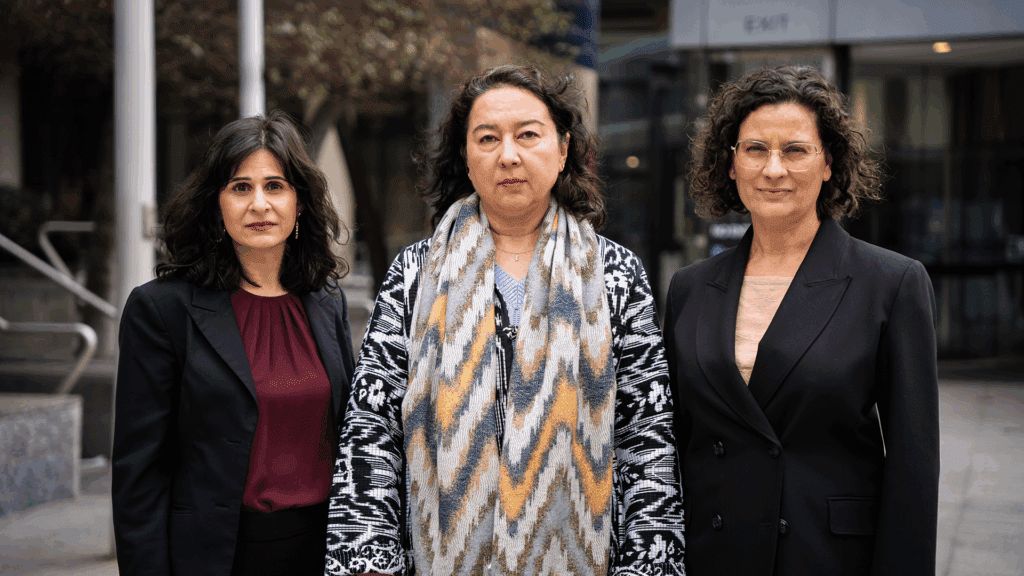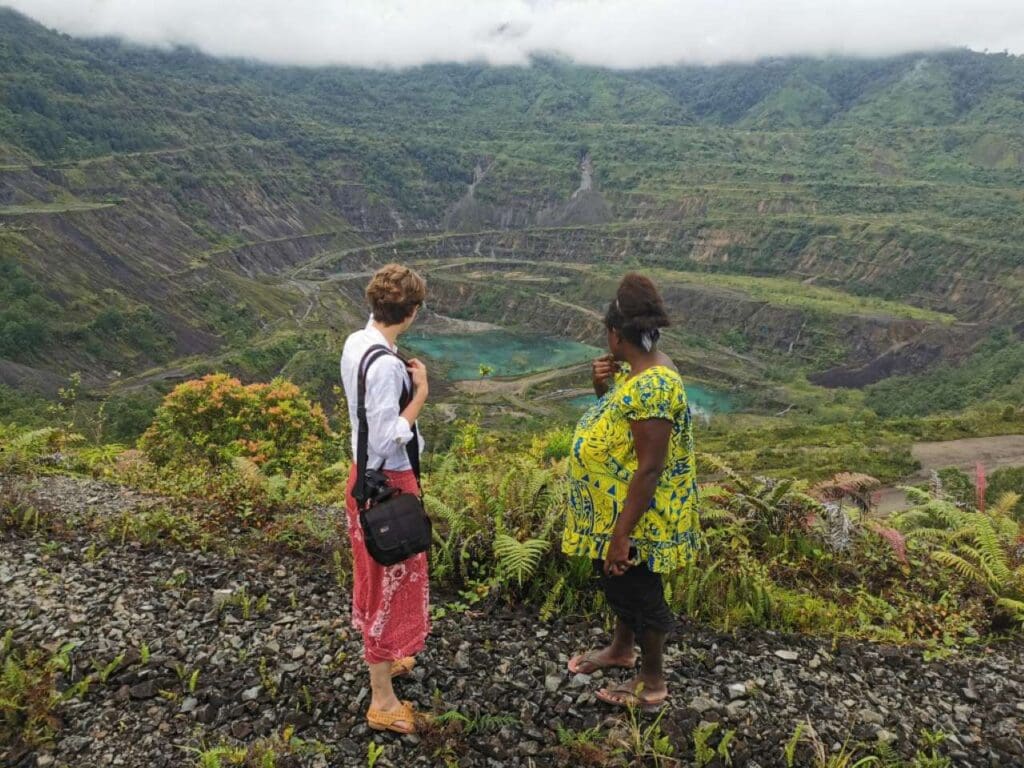Pressure building on Rio Tinto to address harms as independent assessment confirms major ongoing risks and impacts in Panguna
Communities living with the ongoing devastation from Rio Tinto’s former Panguna mine in Bougainville are calling on the company to commit to funding remediation and long-term solutions, after the initial results of a major independent environmental and human rights impact assessment of the mine undertaken by Tetra Tech Coffey were presented back to communities.
The multi-million-dollar impact assessment was undertaken in response to a complaint brought against Rio Tinto in 2021 by 170 local community members, represented by the Human Rights Law Centre. Rio Tinto agreed to fund the study to identify and assess impacts caused by the mine since it ceased operating in 1989 and develop recommendations for what needs to be remedied to address them.
Communities gathered in large numbers in Bougainville over the past week to hear the initial results of phase one of the assessment. This focused on the most serious areas of concern raised by communities in their complaint, including ongoing contamination of their rivers and water supplies, flooding caused by the millions of tonnes of mine waste choking the rivers, collapsing mine levees and chemicals left behind by the mining operation.
The draft independent findings presented to communities validated many of those concerns. The scientists outlined serious impacts in all mine-affected domains assessed, including:
-
significant risks to life and safety posed by the collapsing mine pit, infrastructure and levees;
- ongoing contamination and movement of tailings waste down the rivers into new areas;
- mine-related flooding affecting peoples’ food gardens, access to drinking water and essential services;
- and toxic chemicals stored in certain specific locations and found in the soil in some areas.
- Possible health impacts to people and communities were also identified but require further study through a further phase of work.
Following the incorporation of feedback from the mine-affected communities, the full final report from phase one of the mine legacy impact assessment will be published before the end of 2024.
Rio Tinto has not yet made any clear commitment to funding remediation or solutions for communities but noted in a recently-released statement that the company is “seeking to partner with key stakeholders…to design and implement a remedy framework to respond to the impacts identified through the Independent Legacy Impact Assessment”.
Quote from Theonila Roka Matbob, lead complainant and member of parliament for the area where the mine is located:
“It is a historic moment for our communities, who have been living with the impacts of the Panguna mine for decades, to come together this past week to hear the results of the legacy impact assessment. We never chose the mine, but we live with its consequences every day, trying to find ways to survive in the wasteland that has been left behind.
“The Panguna Mine Legacy Impact Assessment has for the first time given us clear data and some answers to questions we have been asking for years. What exactly are the chemicals in our rivers and gardens? What does that mean for the water we drink, the air we breathe, the food we grow and give to our children?
“What the communities are demanding to know now is what the next step is. A commitment to remediation is where the data is pointing us to, and that’s what the people are waiting for. It is Rio and BCL’s institutional responsibility to now address the devastation the mine has left so that we can live safely on our own land again.”
Quote from Keren Adams, Legal Director at the Human Rights Law Centre:
“The presentations from the legacy impact assessment confirm what communities around Panguna have been saying for decades – that they are living with an ongoing environmental and human rights disaster.
“With no studies having been undertaken in the area in three decades, this investigation has been an essential foundational step towards finding solutions. But it is only the first step.
“Communities are now calling for action from Rio Tinto to address the safety concerns identified and restore their environment and livelihoods.”
“The company now has a critical opportunity to demonstrate that it is serious about meeting its human rights and environmental obligations and finally addressing its legacy on Bougainville. We welcome Rio Tinto’s recent statement about implementing a remedy framework. Communities now need clear information from the company about what that means in practice.”
Background
Panguna was formerly one of the world’s largest copper and gold mines. During its operation from 1972 to 1989, over a billion tonnes of mine waste tailings were released directly into the Jaba and Kawerong rivers. In 1989, an uprising by local people against this environmental destruction and inequities in the distribution of the mine’s profits forced the mine to stop operating and triggered a brutal decade-long civil war.
No clean-up has ever been undertaken of the site. Rio Tinto remained the majority-owner of the mine until 2016, when it divested and passed its shares to the PNG and Bougainville governments, walking away from the disastrous environmental legacy and its impacts on local people.
The impact assessment of the mine is the largest study of its kind ever undertaken in Bougainville. It has been overseen by a multi-stakeholder Oversight Committee which includes clan and community leaders from the mine-affected areas as well as representatives of the Autonomous Bougainville Government and PNG Government, BCL, Rio Tinto and the Human Rights Law Centre.
Over 25,000 people live around and downstream of the mine.
READ: ABC News story on the community presentations in October 2024
READ: Communities human rights complaint against Rio Tinto
READ: The Human Rights Law Centre’s 2020 After The Mine report
Photo credit: Llane Manau, ABC.
Media contact:
Thomas Feng
Engagement Director
0431 285 275
thomas.feng@hrlc.org.au

Albanese Government must act on modern slavery after UN sounds alarm
The Human Rights Law Centre is calling on the Albanese Government to take stronger action on modern slavery and protections for migrant workers after the UN Special Rapporteur on Contemporary Forms of Slavery sounded the alarm in a new report.
Read more
Australian Uyghurs file legal action to determine whether Kmart engaged in misleading conduct about use of forced labour in its supply chains
Australian Uyghurs are taking retail giant Kmart to court seeking documents to determine whether Kmart engaged in misleading and deceptive conduct about the use of Uyghur forced labour by some of its clothing suppliers.
Read more
Rio Tinto to face scrutiny at AGM for response to Panguna mine disaster
As shareholders meet in Perth today for Rio Tinto’s AGM, communities living with the ongoing devastation from Rio Tinto’s former Panguna mine are calling for the company to urgently commit to funding long-term solutions.
Read more



